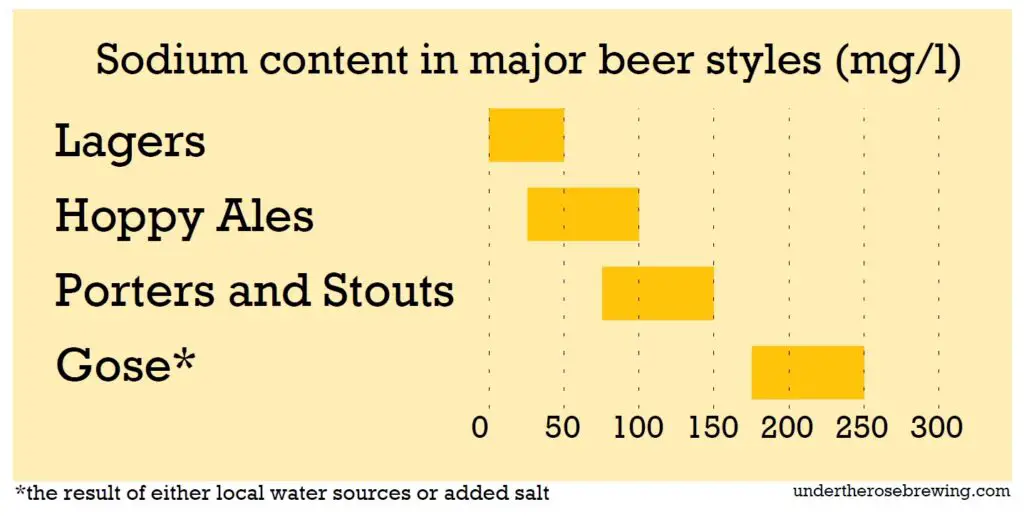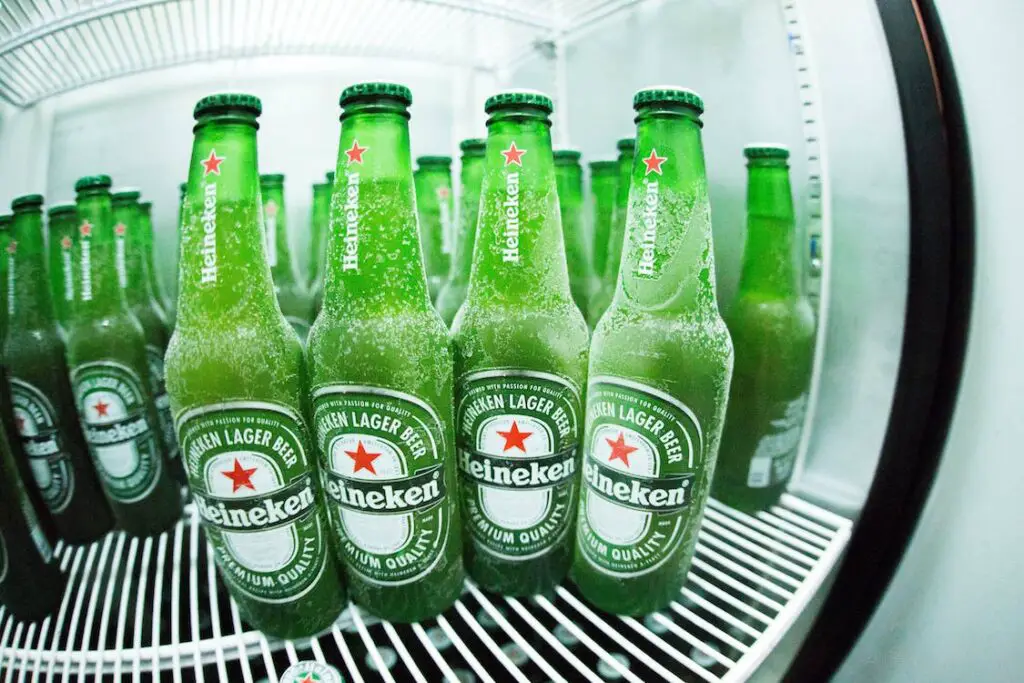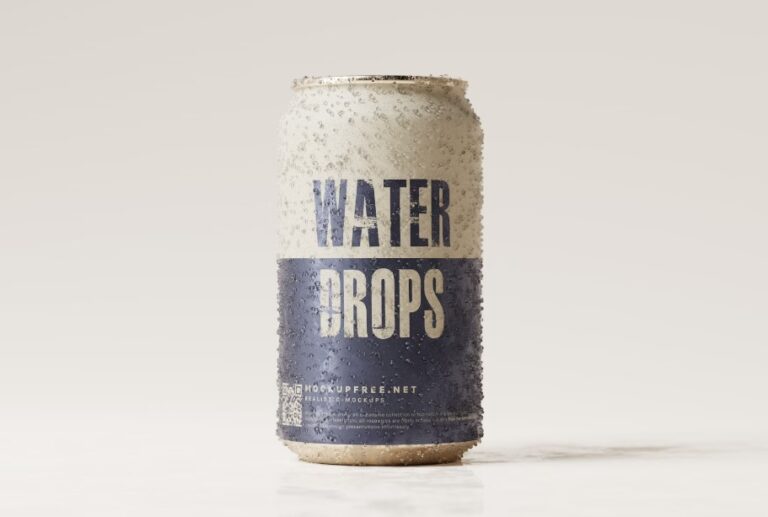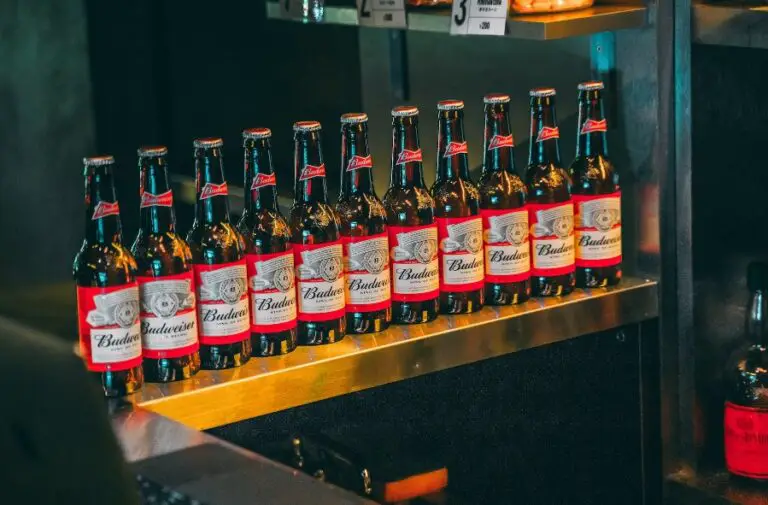Sodium in Beer – What You Need To Know
Yes, there is salt (sodium) in beer! But how much?
You’d be surprised to discover that, on average, beer contains around 10-20mg of sodium per a 12 oz serving. This translates to about 4 to 14 mg per 100 ml of beer. Sodium content can vary wildly, especially for craft beers, and can go up to 170 mg per 100 ml of beer.
Follow us on Instagram!
While the sodium amount is not excessive, it is worth taking into account if you are conscious of your salt consumption (especially if you are the type of guy that drinks several beers in one sitting). Continue reading to delve further into the sodium levels found in various beer types (like stout beer) and how they can differ based on the brewing process. Cheers!

As you can see, there’s a considerable variation in sodium levels in beer. Typically, sodium in beer comes from salt (NaCl) and the sodium bicarbonate (NaHCO3) present in the water. However, at such minuscule concentrations, it tends to contribute only a subtle influence on the beer’s flavor. More significant are the sulfate or chloride ions, which can enhance the hoppy or malty characteristics of the beer.
Certain beer styles, such as Gose, involve the deliberate addition of salt (or very salty local brewing water) during the brewing process, resulting in significantly higher sodium levels.
The Importance of Sodium in Beer
Sodium has a significant role in the brewing process, as yeast relies on this mineral for optimal growth and fermentation.
While salt itself is not directly added to beer, the quantity present in the water used during brewing greatly impacts various aspects of the process. This includes the flavor profile of the beer, as well as its head retention and overall stability. The sodium content in the water interacts with the other ingredients, contributing to the final product’s characteristics and quality.

Sodium, as a naturally occurring element, serves crucial functions in numerous biological processes, such as fluid balance maintenance, blood pressure regulation, and nerve function.
In the realm of beer production, sodium holds great importance as it plays a significant role in shaping the overall flavor profile of the end product. The presence of sodium contributes to the taste experience, adding depth and complexity to the beer. Brewers carefully consider the sodium content to ensure that it aligns with the desired flavor characteristics of the beer they craft.
While sodium isn’t intentionally added for its saltiness during the brewing process, it’s common to find trace amounts of sodium in the water sources used for beer production. The hardness or softness of water is determined by the concentration of calcium and magnesium, while sodium levels affect the mouthfeel and perceived body or fullness of the beer.
Beers brewed with soft water typically exhibit a lighter body and delicate flavors when compared to those brewed with hard water. The varying sodium content in the water contributes to the overall sensory experience, influencing the texture and perceived weight of the beer on the palate. Brewers carefully consider the water profile, including sodium levels, to achieve the desired balance and character in their brews.
Quick facts: Sodium gives beer a better flavor and makes it more palatable at moderate concentrations. The preferred sodium range is 0 to 150 ppm, but should be lower than 100 ppm if the sulfate content is high. Sodium levels of 50 ppm and lower is preferable for most beers.
Sodium in Beer is Natural
The sodium content in beer can vary depending on factors such as the water used during brewing and the ingredients involved. While sodium is not deliberately added to beer, it may be present in trace amounts due to the raw materials and the brewing methods employed. It’s worth noting that the overall sodium content in beer is typically relatively low compared to other dietary sources, but it can still contribute to the overall mineral profile of the beverage.

Sodium in Famous Beers
#1 – Light Beers
It is indeed interesting to note that light beers generally exhibit lower sodium levels compared to their regular counterparts, typically ranging from 5 to 10 mg per 12 ounces. However, it’s important to mention that there are exceptions where certain light beers may have higher sodium concentrations, as indicated in the table mentioned above.
Popular light beer brands like Michelob Ultra and Amstel Light are known to contain even lower sodium content, approximately 5 mg per serving. This makes them an appealing choice for individuals who are mindful of their salt intake while still desiring the refreshing taste of a cold beer. These options allow individuals to enjoy their favorite brew while keeping an eye on their dietary considerations.
#2 – Lagers and Pilsners
Pilsners and lagers, two widely consumed beer styles worldwide, share a common characteristic: relatively low sodium content when compared to other beer types. While they may vary in terms of taste, color, and brewing techniques, they tend to have limited sodium levels.
Pilsners typically contain around 5-10 mg of sodium per 12-ounce serving, while lagers generally have below 15 mg per 12-ounce serving.
However, it’s important to note that certain specialty variations of these beer styles may have higher sodium content due to the use of different ingredients or brewing methods. If you specifically seek low-sodium options, it’s recommended to check the nutritional information on the label to make an informed choice.
#3 – Ales and Stouts
Ales and stouts, both beloved beer styles appreciated for their robust and flavorful profiles, often lead to the assumption that dark beers like stouts would naturally have higher sodium levels compared to lighter beers. However, the reality is that the sodium content in these beer types can vary significantly based on the brewing process.
Indeed, hop-forward ales can sometimes exhibit sodium levels within the range of 25-100 mg per liter.
For individuals seeking to limit their sodium intake while savoring flavorful beers, it is crucial to carefully read labels and seek out lower-sodium options.
Artisanal breweries may provide low-sodium variations of traditional styles like pale ale and porter, with sodium levels as low as 5 mg per serving. Additionally, some larger breweries have started including nutritional information directly on their packaging, allowing consumers to make informed choices about their sodium consumption.
#4 – Imported vs. Domestic Beers
When comparing imported and domestic beers, there can be notable variations in their sodium content. Imported beers often tend to have higher levels of sodium, primarily due to the water used in their brewing process or the inclusion of ingredients that may not be commonly found in domestic brews.
Conversely, many American-made beers, as part of their marketing efforts targeting health-conscious consumers, strive for lower sodium content. These beers are often crafted with a focus on reducing sodium levels while still delivering enjoyable flavors.

#5 – Gose
Gose beers, originating from Germany, offer a distinctive and invigorating beer style renowned for its tartness and subtle saltiness. These beers have witnessed a surge in popularity among craft beer aficionados globally. Gose beers typically feature a high to very high amount of salt, ranging from 140 to 560 mg per 12 ounces.
The saltiness is a characteristic feature of Gose beers, contributing to their unique flavor profile. Crafted with a deliberate addition of salt during the brewing process, Gose beers offer a refreshing and slightly tangy taste that sets them apart from other beer styles.

I am a young architect with a passion that goes beyond blueprints… it’s beer! undertherosebrewing.com is more than just a blog, it’s a manifestation of my lifelong dream to explore, read, and learn everything about beer. Join the blog on this unfiltered and genuine adventure into the heart of beer culture. Cheers!







